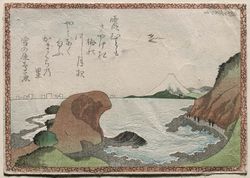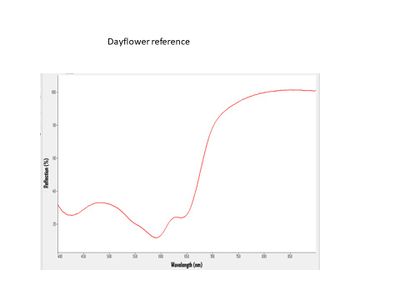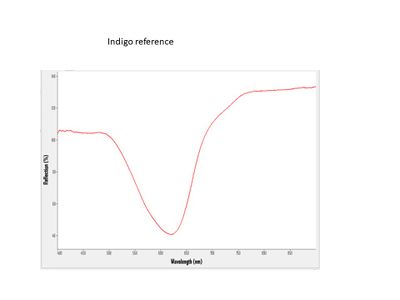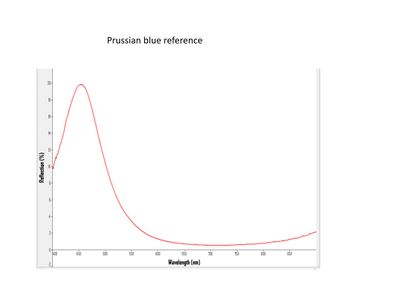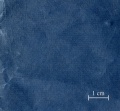Difference between revisions of "Category:Indigo: Ukiyo-e colorant"
m (MDerrick moved page UPC: Indigo to Ukiyo-e Colorant: Indigo) |
|||
| (14 intermediate revisions by 2 users not shown) | |||
| Line 1: | Line 1: | ||
[[File:SC155045.jpg|right|250px|link=https://collections.mfa.org/objects/207552/kamakura-village-from-an-untitled-series-of-westernstyle-l?ctx=1be86594-d25a-458d-827f-8e5dc3048977&idx=0|Kamakura Village by Katsushika Hokusai]] | [[File:SC155045.jpg|right|250px|link=https://collections.mfa.org/objects/207552/kamakura-village-from-an-untitled-series-of-westernstyle-l?ctx=1be86594-d25a-458d-827f-8e5dc3048977&idx=0|Kamakura Village by Katsushika Hokusai]] | ||
| − | <font size="3">'''[[Indigo]]''' 藍(''ai'') | + | <font size="3">'''[[Indigo]]'''</font> 藍(''ai''): A natural dark blue dye obtained from ''Indigofera tinctoria'' plants native to India, Java, Peru, and other tropical areas. The use of indigo was first mentioned in Indian manuscripts in the 4th century BCE. In Japan, indigo was introduced from China in the 6th century. The dye is obtained from an indigo plant native to Asia, ''Persicaria tinctoria''. Indian indigo was imported at the beginning of the Meiji period (1868-1912). |
| − | Indigo and dayflower are the two blues used in Japanese woodblock prints until Prussian blue enters the palette in the 1830's. Indigo appears most frequently from the 1740’s onwards as a color mixed with orpiment to produce a variety of greens. As a single colorant, it appears as a comparatively dull blue color. Due to its poor tinting strength, a relatively large amount needs to be used during printing in order to obtain a good saturation of this color. Its texture is somewhat coarse which makes it difficult to execute graduated hues from dark to light. Unlike dayflower, it is stable to moisture but is prone to fading. | + | Indigo and [[:Category:Dayflower: Ukiyo-e colorant|dayflower]] are the two blues used in Japanese woodblock prints until [[:Category:Prussian Blue: Ukiyo-e colorant|Prussian blue]] enters the palette in the 1830's. Indigo appears most frequently from the 1740’s onwards as a color mixed with orpiment to produce a variety of greens. As a single colorant, it appears as a comparatively dull blue color. Due to its poor tinting strength, a relatively large amount needs to be used during printing in order to obtain a good saturation of this color. Its texture is somewhat coarse which makes it difficult to execute graduated hues from dark to light. Unlike dayflower, it is stable to moisture but is prone to fading. |
| + | |||
| + | [[:Category:Indigo/Orpiment: Ukiyo-e colorant|Indigo and orpiment]] are mixed or overprinted to create a green. This mixture is the most commonly seen combination to create a green. | ||
'''For more information see:''' [[Indigo]] | '''For more information see:''' [[Indigo]] | ||
| Line 42: | Line 44: | ||
== Analysis == | == Analysis == | ||
| − | Fiber optic reflectance spectroscopy (FORS) can easily identify the three blues: indigo | + | Fiber optic reflectance spectroscopy (FORS) can easily identify the three blues: [[:Category:Dayflower: Ukiyo-e colorant|dayflower]], indigo, and [[:Category:Prussian Blue: Ukiyo-e colorant|Prussian blue]]. |
<gallery mode=packed heights=200px style="text-align:left"> | <gallery mode=packed heights=200px style="text-align:left"> | ||
| − | + | Dayflower FORS.JPG|<center>FORS spectrum of Dayflower reference</center> | |
| − | + | Indigo FORS.JPG|<center>FORS spectrum of Indigo reference</center> | |
| − | + | Prussian blue FORS.jpg|<center>FORS spectrum of Prussian blue reference</center> | |
</gallery> | </gallery> | ||
==Other Images of Indigo == | ==Other Images of Indigo == | ||
<gallery> | <gallery> | ||
| + | File:Persicaria tinctoria.jpg|''Persicaria tinctoria'', <small>by Tokushima Prefectural Souvenir and Tourism Plaza</small> | ||
File:indigo tinctoria t.jpg|Indigo plant (''Indigofera tinctoria'') | File:indigo tinctoria t.jpg|Indigo plant (''Indigofera tinctoria'') | ||
| + | Indigo sticks.jpg|Indigo sticks, <small>by Takeo City Library</small> | ||
File:indigo_piece_1.jpg|Indigo piece (''Indigofera tinctoria'') | File:indigo_piece_1.jpg|Indigo piece (''Indigofera tinctoria'') | ||
File:indigo_powder.jpg|Indigo powder (''Indigofera tinctoria'') | File:indigo_powder.jpg|Indigo powder (''Indigofera tinctoria'') | ||
| Line 58: | Line 62: | ||
File:46_Indigo_blue_500X.jpg|Indigo blue | File:46_Indigo_blue_500X.jpg|Indigo blue | ||
</gallery> | </gallery> | ||
| + | Add 千種の花、vol2 p16 | ||
==List of Prints == | ==List of Prints == | ||
| − | + | Below is a list of prints where indigo was detected. | |
| − | |||
| − | |||
| − | |||
| − | |||
| − | |||
Revision as of 00:14, 27 July 2020
Indigo 藍(ai): A natural dark blue dye obtained from Indigofera tinctoria plants native to India, Java, Peru, and other tropical areas. The use of indigo was first mentioned in Indian manuscripts in the 4th century BCE. In Japan, indigo was introduced from China in the 6th century. The dye is obtained from an indigo plant native to Asia, Persicaria tinctoria. Indian indigo was imported at the beginning of the Meiji period (1868-1912).
Indigo and dayflower are the two blues used in Japanese woodblock prints until Prussian blue enters the palette in the 1830's. Indigo appears most frequently from the 1740’s onwards as a color mixed with orpiment to produce a variety of greens. As a single colorant, it appears as a comparatively dull blue color. Due to its poor tinting strength, a relatively large amount needs to be used during printing in order to obtain a good saturation of this color. Its texture is somewhat coarse which makes it difficult to execute graduated hues from dark to light. Unlike dayflower, it is stable to moisture but is prone to fading.
Indigo and orpiment are mixed or overprinted to create a green. This mixture is the most commonly seen combination to create a green.
For more information see: Indigo
Examples of Indigo in Ukiyo-e Prints

|

|

|

|

|
Analysis
Fiber optic reflectance spectroscopy (FORS) can easily identify the three blues: dayflower, indigo, and Prussian blue.
Other Images of Indigo
Add 千種の花、vol2 p16
List of Prints
Below is a list of prints where indigo was detected.
Pages in category "Indigo: Ukiyo-e colorant"
The following 13 pages are in this category, out of 13 total.
E
H
S
T
- TEST-Utamaro I, Women Overnight Guests, a Triptych, 21.6328-30
- TEST-Utamaro I, Women Overnight Guests, left panel of triptych, 21.6328
- Toyokuni, Actor Arashi Kitsusaburô I as the Monkey Trainer Yojirô, in the Horikawa Scene of the Play Oshun and Denbei, 11.30331
- Toyonobu, Rain in the Fifth Month, 11.19048
- Toyonobu, Young Couple Burning Maple Leaves to Heat Sake, 11.19676
